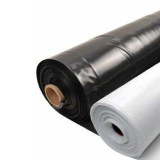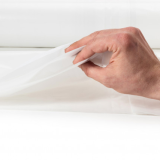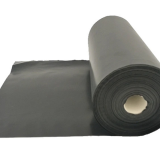Construction Film




Polyethylene film is a type of plastic film that is made from polyethylene, a thermoplastic polymer. It is commonly used in the construction industry for various applications such as vapor barriers, moisture barriers, temporary protection, and insulation.
The manufacturing process of polyethylene film involves the following steps:
-
Polymerization: Polyethylene is produced through the polymerization of ethylene monomers. The process can be carried out through different methods such as high-pressure polymerization, low-pressure polymerization, or metallocene catalysis.
-
Extrusion: The polyethylene resin is melted and extruded through a die to form a continuous film. The extrusion process involves feeding the resin into an extruder, which heats and melts the polymer. The molten polymer is then forced through a die, which shapes it into a flat film.
-
Cooling: After extrusion, the film is rapidly cooled to solidify it. Cooling can be achieved using air or water quenching methods, depending on the desired properties of the film.
-
Winding: The cooled film is wound into large rolls for storage and transportation. The winding process is typically automated and can be done in-line with the extrusion process.
During the manufacturing process, various additives can be incorporated into the polyethylene resin to modify the film's properties. For example, additives like UV stabilizers, antioxidants, slip agents, and colorants may be included to enhance the film's durability, resistance to degradation, surface properties, and appearance.
In the construction industry, polyethylene film is available in different thicknesses and grades to suit specific applications. It is commonly used as a moisture barrier in foundations and walls, as well as a temporary cover during construction to protect surfaces from dust, debris, and moisture. The film's versatility, durability, and cost-effectiveness make it a popular choice in the construction sector.





